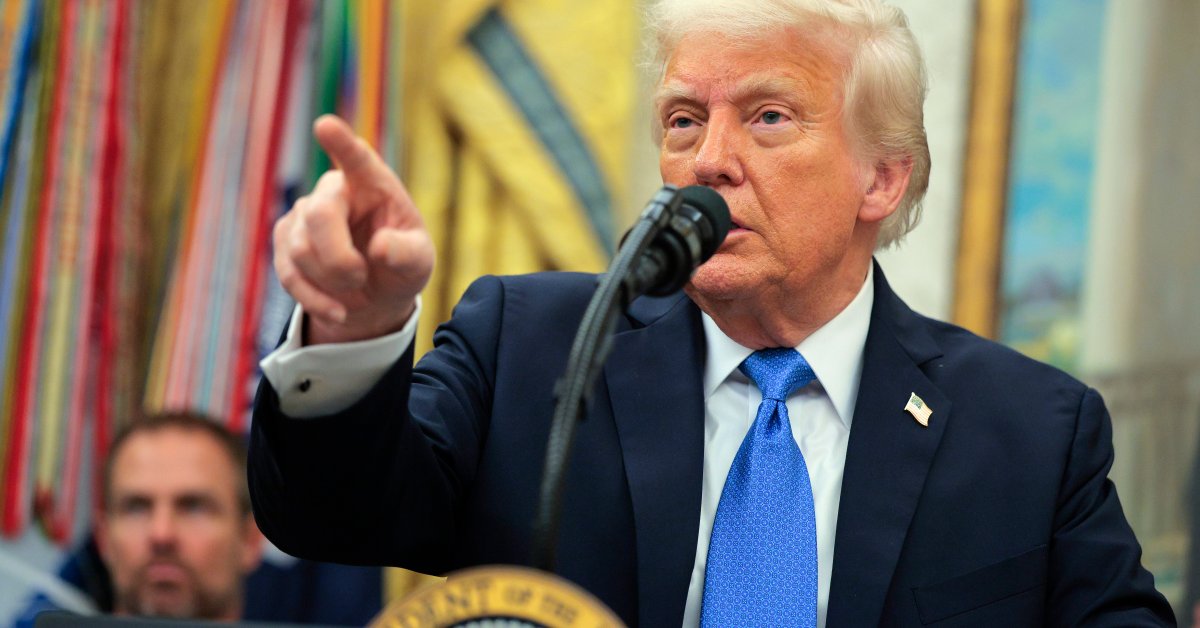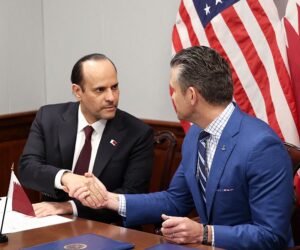In a sharp escalation of trade negotiations with the European Union (E.U.), Trump took to social media on Friday and announced that he is “recommending a straight 50% tariff on the European Union, starting on June 1, 2025.”
“The European Union, which was formed for the primary purpose of taking advantage of the United States on TRADE, has been very difficult to deal with,” Trump claimed. “Their powerful trade barriers, VAT taxes, ridiculous corporate penalties, non-monetary trade barriers, monetary manipulations, unfair and unjustified lawsuits against Americans companies, and more, have led to a trade deficit with the U.S. of more than $250,000,000 a year, a number which is totally unacceptable. Our discussions with them are going nowhere!”
As he has said elsewhere, Trump went on to add: “There is no tariff if the product is built or manufactured in the United States.”
Trump’s initial April 2 “Liberation Day” tariffs included a blanket 10% tariff on nations doing business with the U.S., plus additional “reciprocal” tariffs for some. The E.U. was hit with a 20% reciprocal tariff.
In response, Ursula von der Leyen, president of the European Commission, the E.U.’s executive arm issued a strong statement, calling the move “a blow to the world economy,” and vowing that the E.U. would issue countermeasures.
“We are in this together. If you take on one of us, you take on all of us. Europe stands together for our businesses, for our workers and for all Europeans,” she said, before highlighting her eagerness to move from “confrontation to negotiation.”
The E.U. voted to retaliate on some of Trump’s tariffs, but such discussions were halted when Trump announced a 90-day pause on most “reciprocal” charges. The E.U. therefore currently only has a 10% tariff from the U.S. While the 90-day pause, set to expire on July 9, has offered the E.U. a reprieve, Trump’s threat to enforce a 50% tariff starting June 1 has once again spiked tensions and the markets have responded negatively.
Some hours after Trump’s announcement on Friday, Maroš Šefčovič, Commissioner for Trade and Economic Security at the E.U., posted on X that he had engaged in discussions with Trump’s Secretary of Commerce, Howard Lutnick, and the U.S. Trade Representative Jamieson Greer.
“The E.U.’s fully engaged, committed to securing a deal that works for both. E.U. remains ready to work in good faith,” Šefčovič said, before reiterating the E.U.’s stance that negotiation is preferred over confrontation. “E.U.-U.S. trade is unmatched and must be guided by mutual respect, not threats.”
However, amid fears of a U.S.-E.U. trade war, Šefčovič concluded on a defiant note: “We stand ready to defend our interests.”
The E.U. is one of Washington’s top commercial partners, and is the largest trading bloc in the world.
Later in the Oval Office on Friday, Trump defended his announcement, complaining about the E.U.’s business dealings and citing the U.S. goods trade deficit with the E.U., which was $235.6 billion in 2024, according to U.S. Commerce Department data.
“I’m not looking for a deal,” Trump told reporters. “We’ve set the deal—it’s at 50%.”
A tense history between Trump and the E.U.
Trump’s tariff threat comes after years of him highlighting dissatisfaction with trade between the U.S. and the E.U.
During his first term, Trump imposed tariffs on steel and aluminium imports from the E.U., Canada, and Mexico, which at the time brought the U.S. to the brink of a trade war. In 2018, when asked about the tariffs, Trump said that “nobody treats us much worse than the European Union” and argued the bloc was “formed” to “take advantage of” the U.S.
During the first few months of Trump’s second term in the White House, tensions have grown, both as a result of his tumultuous trade policies and his geopolitical moves in regards to the Russia-Ukraine war.
Meanwhile, outside of the E.U., Trump has had some success with his trade deals. Trump said on Truth Social on Friday that the U.S. dealings with the United Kingdom are “working out well for all.” This comes after the U.S. and the U.K. announced a trade agreement on May 8, one which Trump hailed for its “reciprocity and fairness.”
Meanwhile, progress was made between the U.S. and China earlier this month, when both nations agreed to drastically reduce tariffs on each other for an initial 90-day period, which came into effect on May 14.








